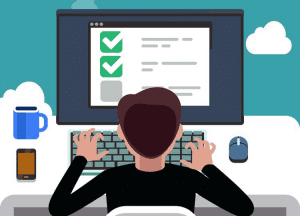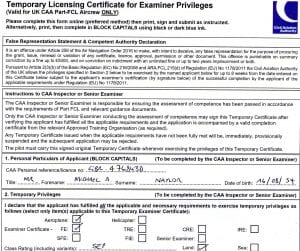 First a confession. I am a big fan of the flight navigation (dead reckoning) computer, a.k.a. the whizz wheel. Sure, it takes a little investment to learn how to use it, but once over that hurdle, it is fast and accurate.
First a confession. I am a big fan of the flight navigation (dead reckoning) computer, a.k.a. the whizz wheel. Sure, it takes a little investment to learn how to use it, but once over that hurdle, it is fast and accurate.
A bit of history
The ‘flight computer’ was invented in the 1930’s by Lt. Philip Dalton, a US military scientist and US Naval Reserve Pilot. It was portable and intuitive. “Really?”, I hear you say! In those days. slide rules were how mathematical and engineering calculations were performed. They were adopted by the US and UK military and soon made their way into civilian aviation too.
And in the 21st century?
In this digital age, virtually every PPL holder uses app’s on their smartphone for weather, navigation planning and maybe even for weight and balance. So is there an alternative to the whizz wheel in those pesky theory exams? Well yes there is.

An app (and there are many of them!) on a phone or tablet is not acceptable to the UK CAA– the concern here is that it is also a communication device and may hold other apps with which a candidate might cheat.
However, the UK CAA’s exam instructions state that a candidate may use: a “Scientific calculator, or a mechanical navigation slide rule (DR calculator), or an electronic flight computer”. Electronic flight computers were all the rage 20-30 years ago and Sporty’s E6B and ASA’s CX3 are still available, if you have £100 to £150 to spare.
Save your cash
 Here’s the solution which several flying schools offer…. Buy Sportys E6B app for your phone and practice with that. It will cost under $10 on Android and a bit more if you insist on using an iPhone or iPad. For the real exam, borrow a Sporty’s E6B electronic computer from your friendly and helpful instructor. The user interface is well-nigh identical. Job done!
Here’s the solution which several flying schools offer…. Buy Sportys E6B app for your phone and practice with that. It will cost under $10 on Android and a bit more if you insist on using an iPhone or iPad. For the real exam, borrow a Sporty’s E6B electronic computer from your friendly and helpful instructor. The user interface is well-nigh identical. Job done!
2025 edit – the CAA have now decided that electronic flight computers , in any form, may NOT be used for theory exams. You may still use them in the skills test, but expect to be tested on how they work and alternative manual calculations!

 The CAA introduced e-exams back in October. Full details can be found here:
The CAA introduced e-exams back in October. Full details can be found here: 


 Back in the spring, I was doing Flight Examiner training with our CFI. One of the training exercises is to conduct an LPC (Licence Proficiency Check) on a lapsed pilot returning to flying. You know how some comedians are excellent mimics? Well our CFI can mimic the rusty or inept pilot to a T. She demonstrated more bad habits in 30 mins than I have seen in several years of biannual instruction flights. For example….
Back in the spring, I was doing Flight Examiner training with our CFI. One of the training exercises is to conduct an LPC (Licence Proficiency Check) on a lapsed pilot returning to flying. You know how some comedians are excellent mimics? Well our CFI can mimic the rusty or inept pilot to a T. She demonstrated more bad habits in 30 mins than I have seen in several years of biannual instruction flights. For example…. I am pleased to announce that I have passed the Assessment of Competence for the PPL Flight Examiner certificate. This means that I can now conduct LAPL(A) and PPL(A) skill tests, IMCR / IR(R) skill tests and LST / LPC tests for SEP rating issue / re-validation.
I am pleased to announce that I have passed the Assessment of Competence for the PPL Flight Examiner certificate. This means that I can now conduct LAPL(A) and PPL(A) skill tests, IMCR / IR(R) skill tests and LST / LPC tests for SEP rating issue / re-validation.